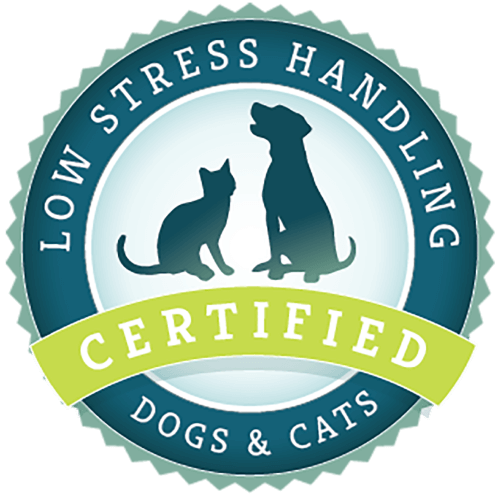What article are you looking for?
Category: I am a Shelter Worker
Understanding and Compassion: Keys to a Successful Adoption
Adopting a dog from a shelter or rescue is a very noble thing to do and can mean the difference between life and death for many of these animals. Unfortunately, sometimes people with the best intentions find themselves overwhelmed when they bring their rescue home and are suddenly faced with some unexpected challenges. Educate yourself on best training techniques and learn to recognize brewing fear before you bring Fido home.
The Collar Hold
This hold controls direction in 6 ways to reduce movement and provide staff safety from head flip or bite attempts. Combine this technique with targeting to help the dog focus and learn to stand in place for blood draw, injection, palpation, and nail trims.
Step By Step Guide to Interaction
1. Take the first part of the meal every day for a short 3–5-minute training session. Hold the food in your hand – I prefer not using a treat bag. I want the dog to think at any time I may have a reward not just when I have a treat bag on. Enter Title. [Required] 2. Control release of food – only release food for correct behaviors – no grabbing! Enter Title. [Required] 3. Stand upright – your dog can read what you are going to do Hold 1–3 nuggets between your
Leash Walking Tips: Giving Correct Cues for Stopping
Have you ever been in a new city or location or situation and uncertain of where to go and the person who’s supposed to be guiding you keeps getting you mixed up? “This way,” they say as they walk forward slowly but while scanning the signs to the right and left. And then, “Wait no… this way.” And then, “Oops. I meant the other way instead.” If you have, I’m sure you remember the stress and frustration. Now ask yourself, do the dogs I walk at the veterinary hospital or shelter get mixed signals, too? Am I conveying an air
Support Your Local Veterinary Practice
Over the past few years, various certification programs to reduce fear, anxiety, and aggression in animals receiving veterinary care have been established. Currently, four of the most well known of these programs are: Cat Friendly Practice® American Association of Feline Practitioners https://www.catvets.com/cfp/cfp Low Stress Handling® Certification CattleDog Publishing, founded by Dr. Sophia Yin https://lowstresshandling.com/ Karen Pryor Clicker Training Karen Pryor Academy https://www.karenpryoracademy.com/ Fear Free℠ Fear Free, LLC, headed by Dr. Marty Becker https://fearfreepets.com/courses/fear-free-certification-program/ 2018VMXLogo Other sources for learning how to reduce pet fear and aggression during veterinary care also exist, such as a
Low Stress Handling University – Official Launch
It’s Here!!! It’s Finally Here!!! You’ve been waiting months for it and now the Low Stress Handling® University is finally open to the public. After 2 months of watching and slicing videos (at least 4 – 5 times each), editing every word and sentence, planning color schemes, developing course organizations, designing curriculums to put those courses into, and running through every setting in the system at least 50 times, not to mention the nearly than 1,000 hours that it took to do all of this, we are proud to present the Low Stress Handling® University. LSHU-Student-Dashboard The Low Stress Handling® University (a service of CattleDog Publishing), is

Low Stress Handling® Silver-Level Certification
Individual Certification at this level demonstrates to clients and employers the individual’s dedicated interest in Low Stress Handling®. Hospital Certification at this level demonstrates to clients and staff the hospital’s commitment to appropriately training staff in Low Stress Handling® methods.
Learn More
